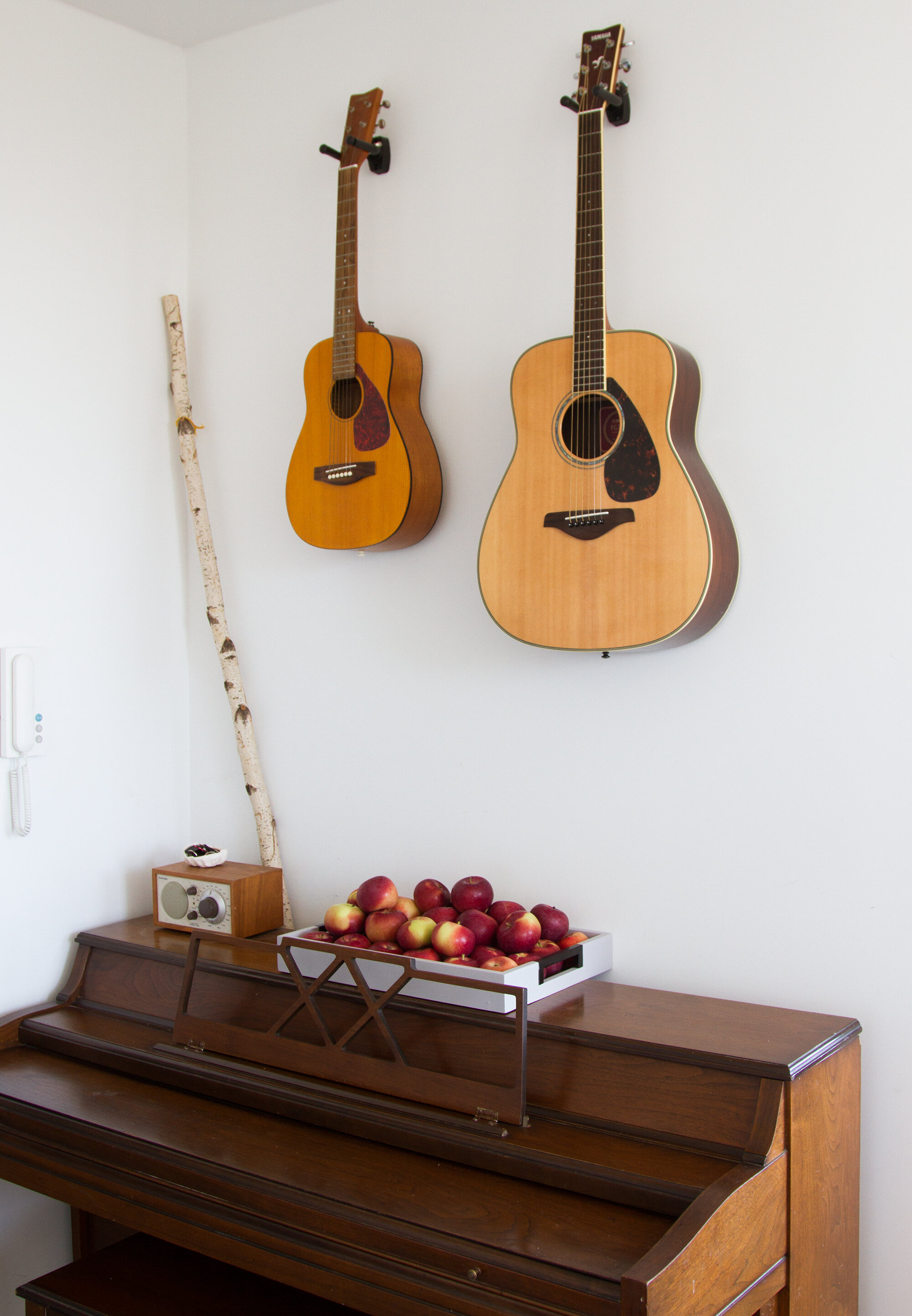
Joylynn Holder | Brooklyn Forest School
Joylynn Holder and her husband Charlie Foster are co-founders of the Brooklyn Forest School, a weekly outdoor class for toddlers and their families that we’ve been attending with Faye since the summertime. Intrigued by the thoughtful simplicity of the course itself, I was eager to ask Joylynn a few questions about how she thinks simplicity relates to early childhood education and how some of the principles that the course espouses manifest themselves in the Holder-Foster household.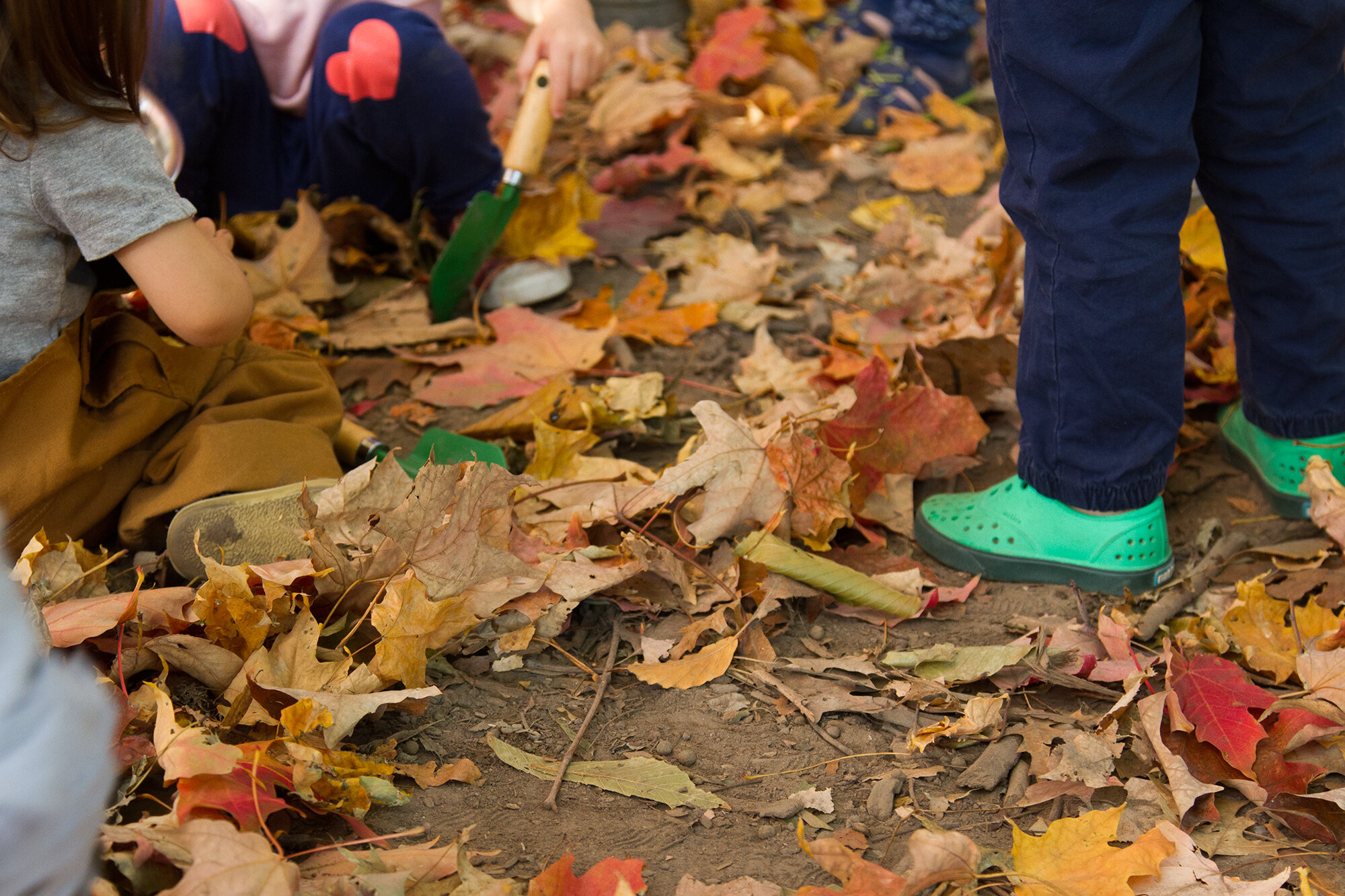
Erin: You and your husband Charlie run a Waldorf-inspired children’s program in New York City called the Brooklyn Forest School. Can you tell RMTL readers a bit about the classes that you offer and what led you to develop the program?
Joylynn: Forest school is a weekly class for young children and their families in Prospect Park and Central Park. Together we make acorn soup, build with branches, share a picnic, go on a nature walk and sing constantly. Each class is led by two teachers, who create over the course of a season the feeling of a forest classroom, a place where the children feel confident playing with little more than their imaginations and what we can find out there in the park.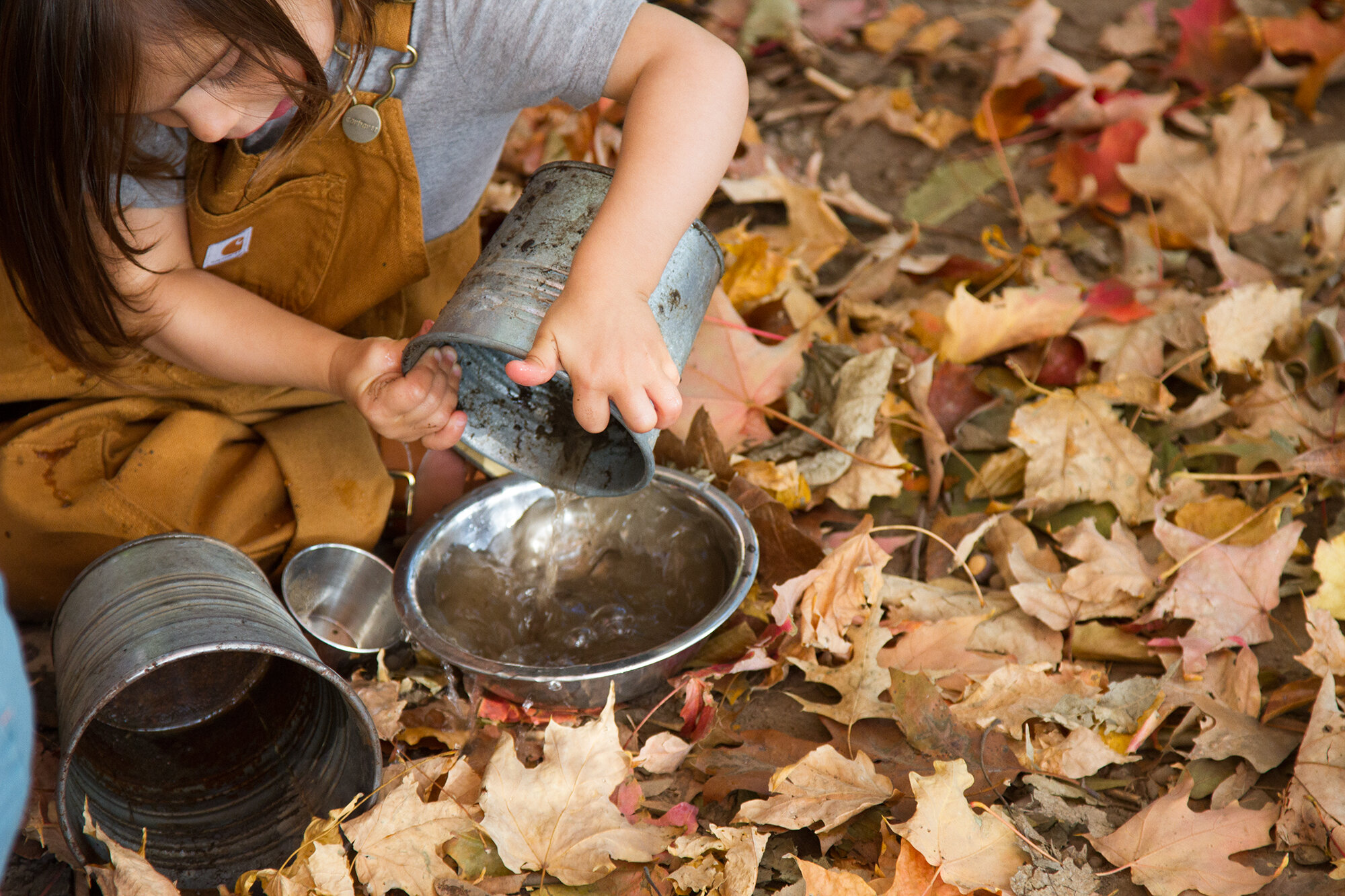
Charlie and I were the teachers for the first seasons of forest school. We started in 2011 with a small group of families in Brooklyn who had read about the idea of forest schools in Europe, but couldn’t find a teacher to lead one here. Our daughter was a toddler at the time and we had already begun adapting the ideas and traditions from our own childhoods together at a Waldorf school on Long Island to the reality of raising a child in the city. Having a relationship with nature was one of the traditions we wanted to pass along.
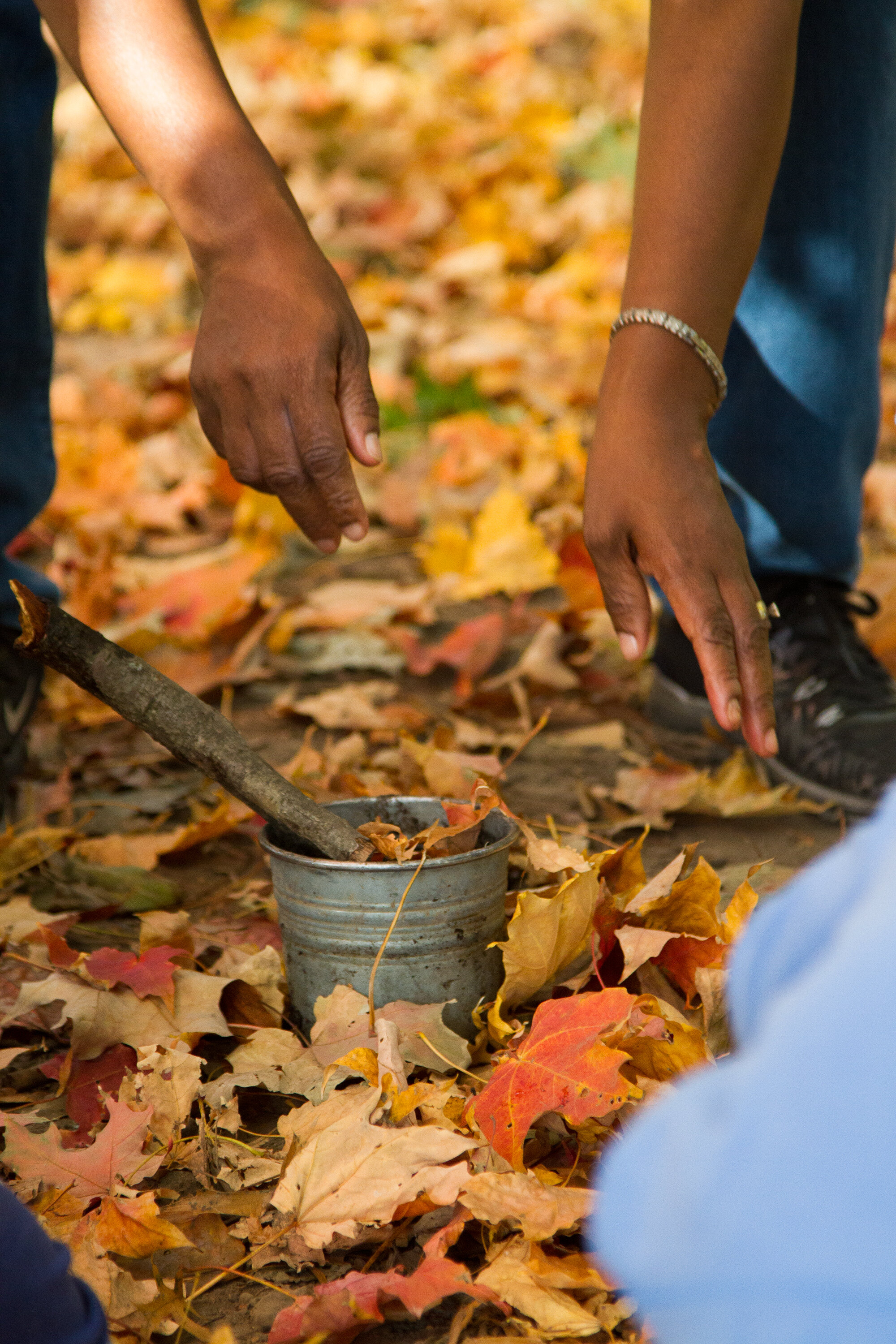 Erin: How does simplicity play a role in the classes and in your view of early childhood education in general?
Erin: How does simplicity play a role in the classes and in your view of early childhood education in general?
Joylynn: Our class is simple when it comes to materials. As teachers, we bring in some supplies but then look to the park to provide most of the other materials we’ll work and play with—branches, stumps, bark and stones. I remember describing the class to a teacher from another school and in particular the way we play with mud. Halfway through the conversation I realized that she had misheard the term forest school as “poorest school,” which seemed just as fitting to her. It made me laugh, but it also made me realize how overlooked these lowly, natural materials are, even by teachers. And even though their simplicity is what makes them ideal—they release the children’s imaginations, give them room to explore new possibilities. And they’re also beautiful.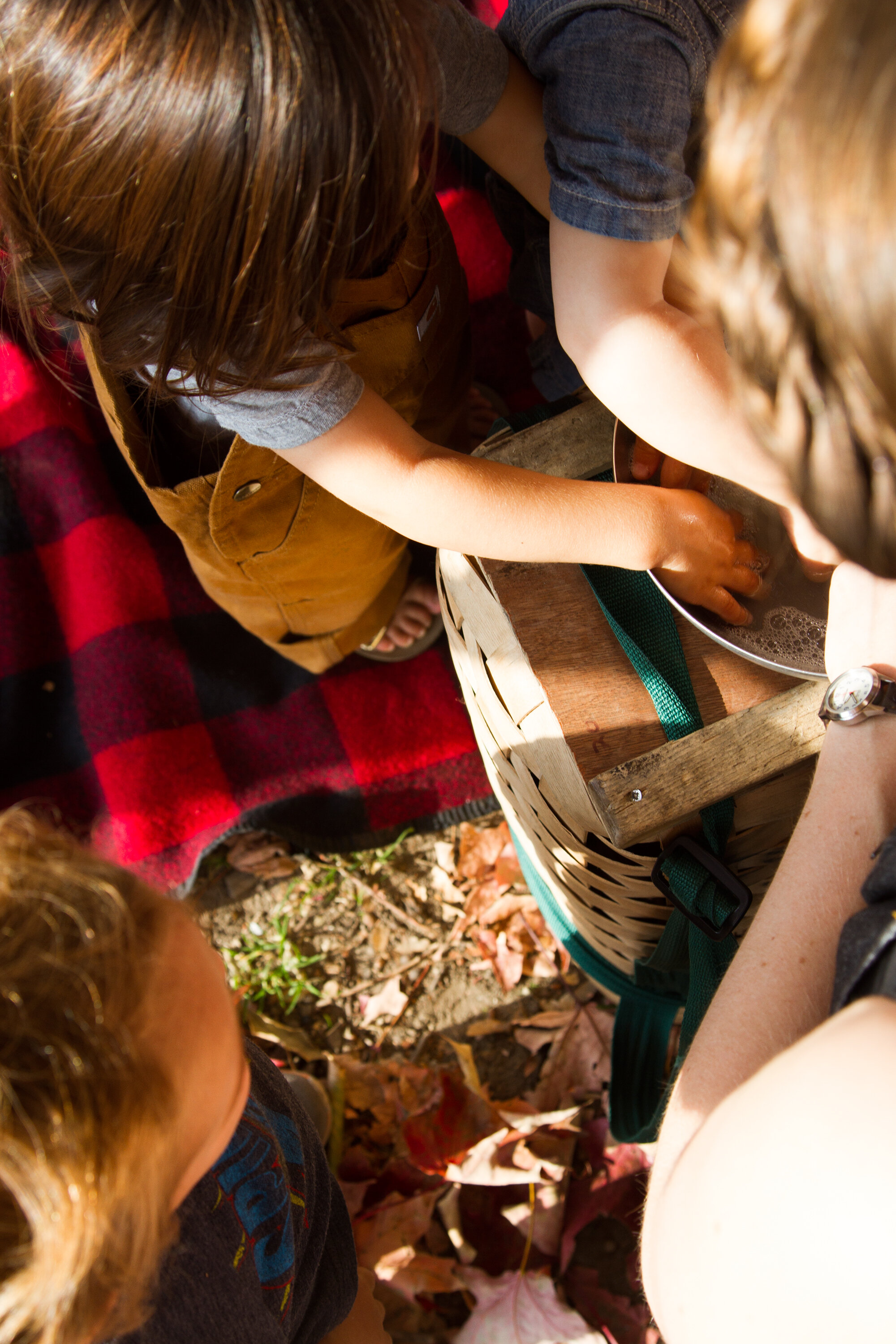
We also apply the idea of simplicity to time. I believe that keeping predictable, simple rhythms or schedules helps all people to move along well with the task of living. But it’s especially helpful for very young children who are in their most developmentally transformative years. In practice it means that our class follows the same basic routine from one week to the next and throughout the season.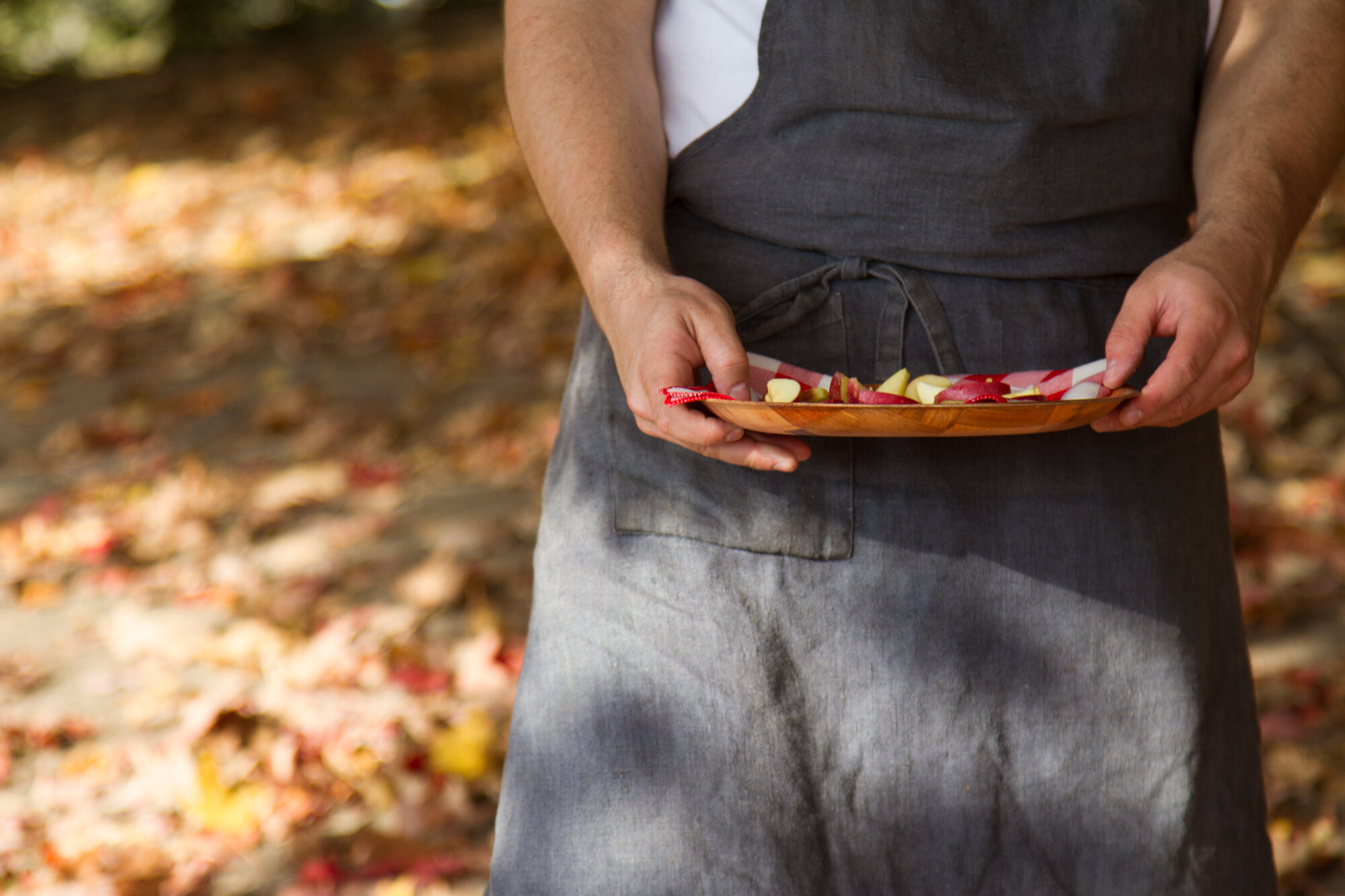
Children quickly pick up the chronology of events—they know that after they’ve washed their hands, their teacher will offer them an apple slice, or that the nature walk always ends in the meadow. When so much else in their lives is changing just by nature of their rapid development, it gives them confidence to know what comes next.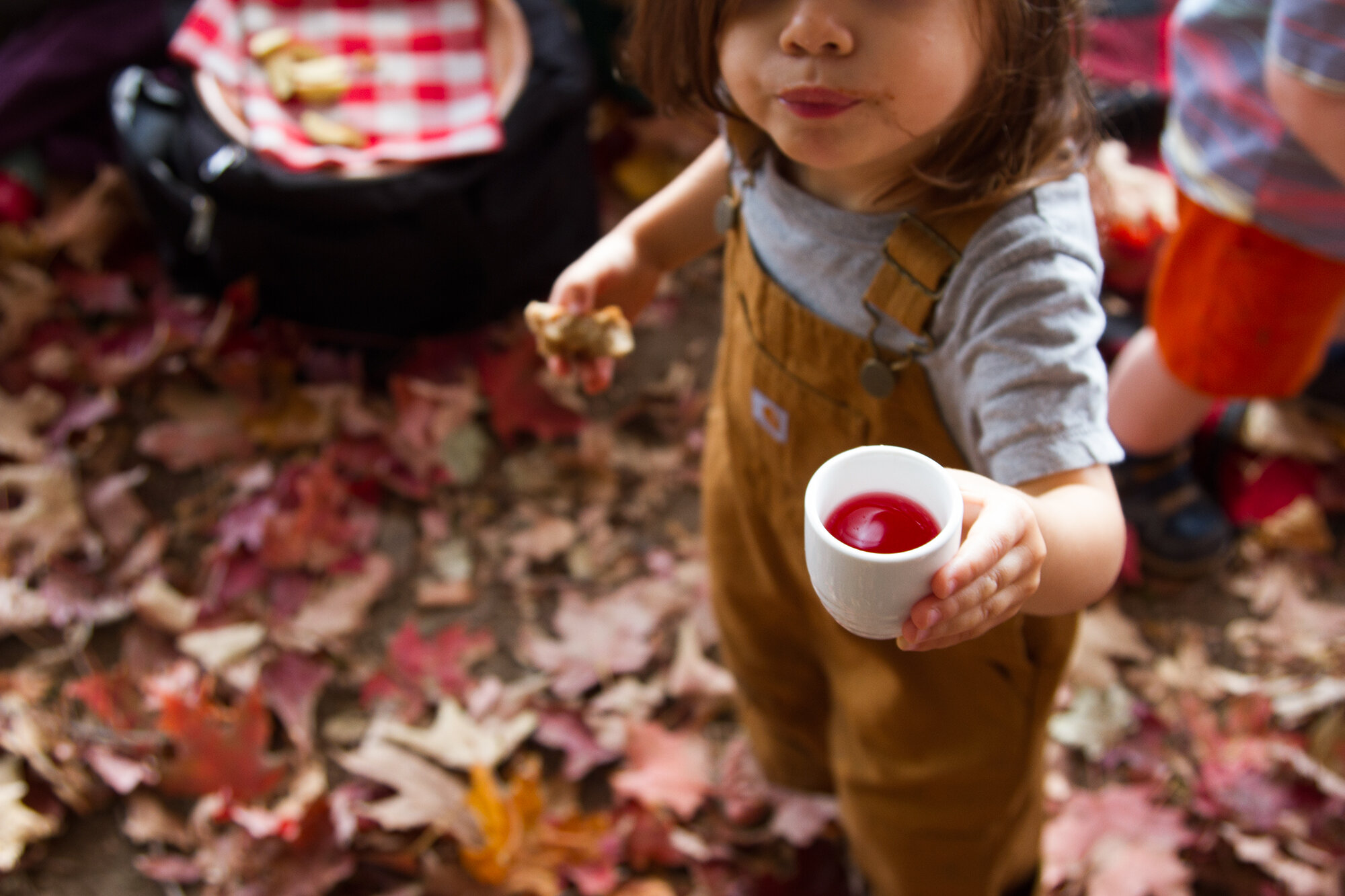
There are many ideas out there about education, about what a school should be and what it should do. When it comes to our view of early childhood education, we keep it simple in this regard, too, and attempt to introduce families to only the most fundamental idea of what a school is.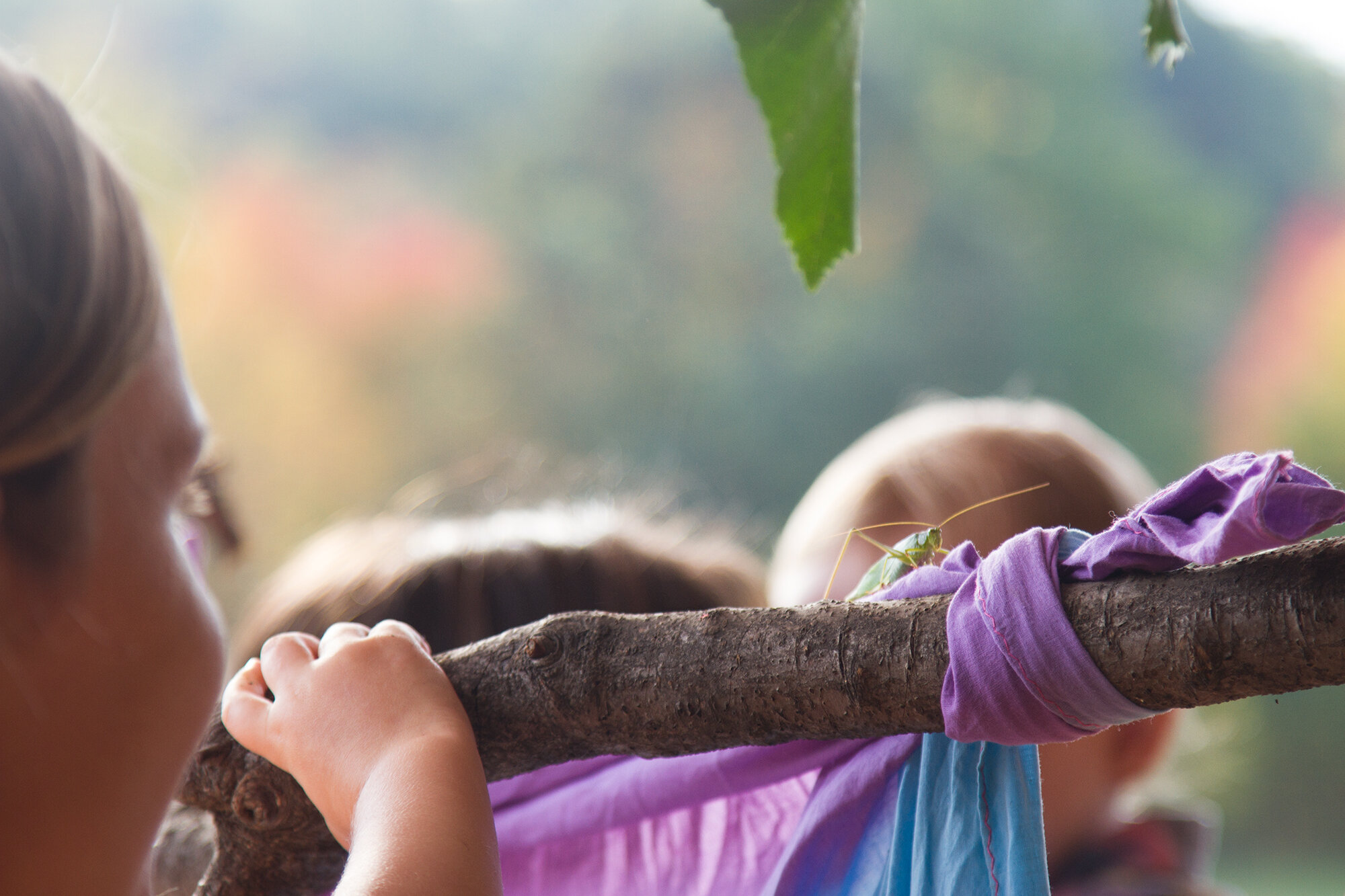
For us, it’s a relationship between a child and a teacher; it’s an environment that elicits imagination from a child; and it’s a community that recognizes the need to meet children where they are in their development. If we work to achieve those things each class, even in small ways, I think we’ll end up with something meaningful. 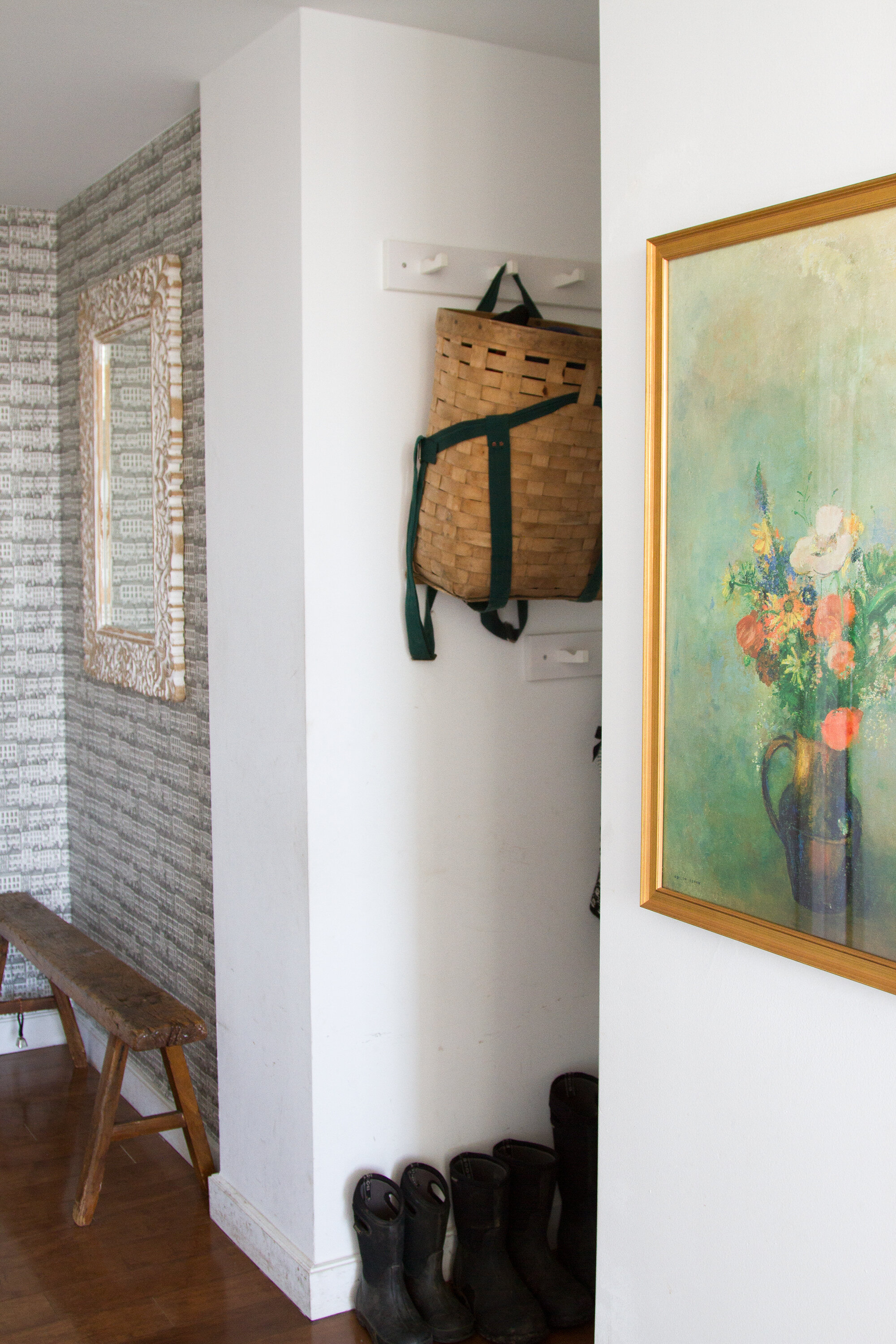
Erin: You’ve been described as a “serious minimalist.” Are there principles of simplicity that your family has also embraced in your home life? What’s your current relationship with stuff?
Joylynn: Just like the class rhythm in forest school, we use family rituals as a way of simplifying time at home. For instance, we eat all of our meals together each day, except for lunch when our daughter is at school. We always sing grace before eating, and at dinnertime we each share a “rose” and a “thorn” about our day to give us a peek into each other’s worlds of feeling.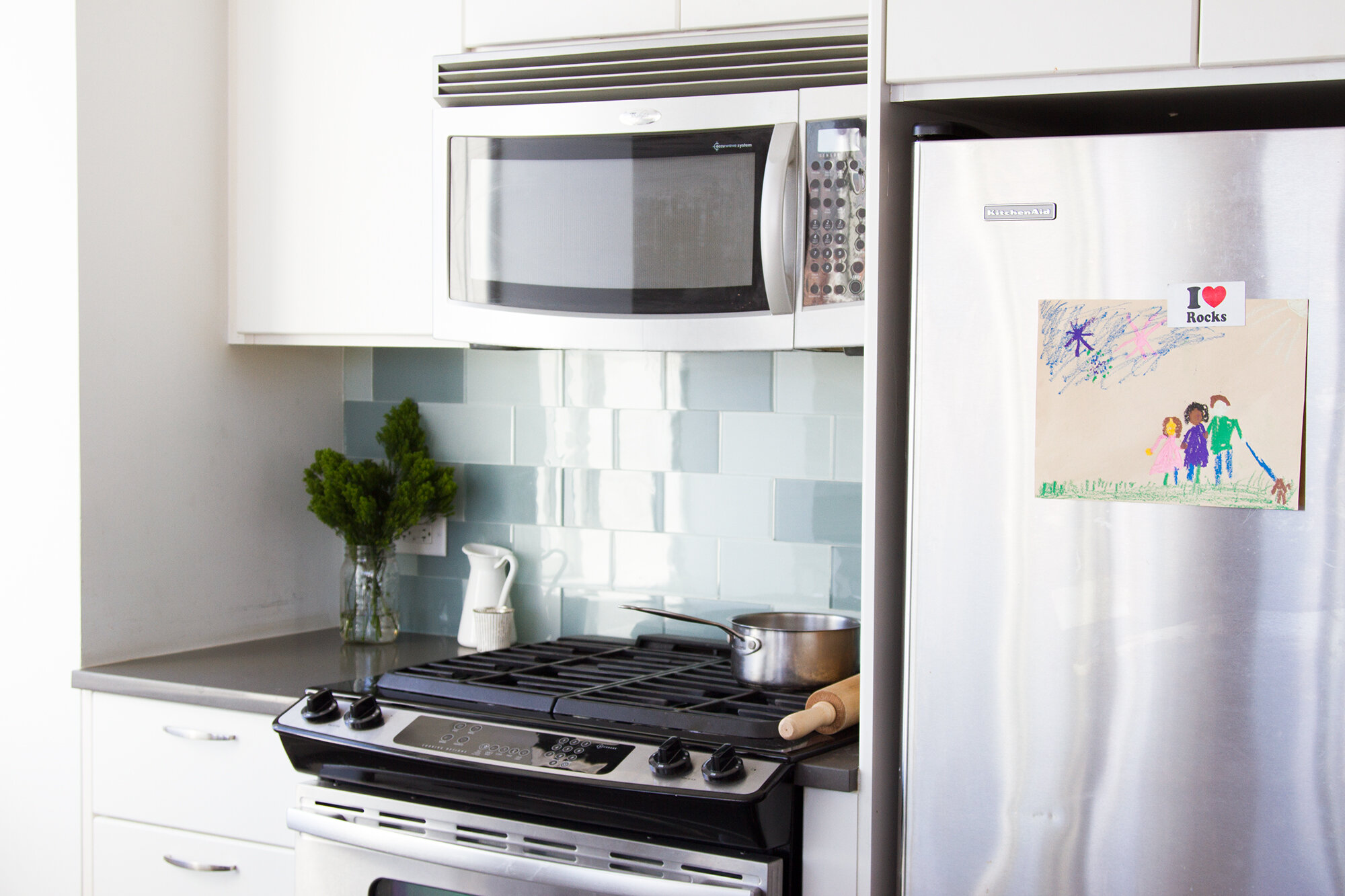
I have learned to take minimalism seriously when it comes to stuff, too. For better or worse, I’m an incredibly cerebral person and spend a lot of time with my thoughts. In order to do that, though, I’ve found that I need the physical space around me to be unobtrusive. I’d rather throw things away than trip over them, which I also do sometimes, especially while daydreaming.
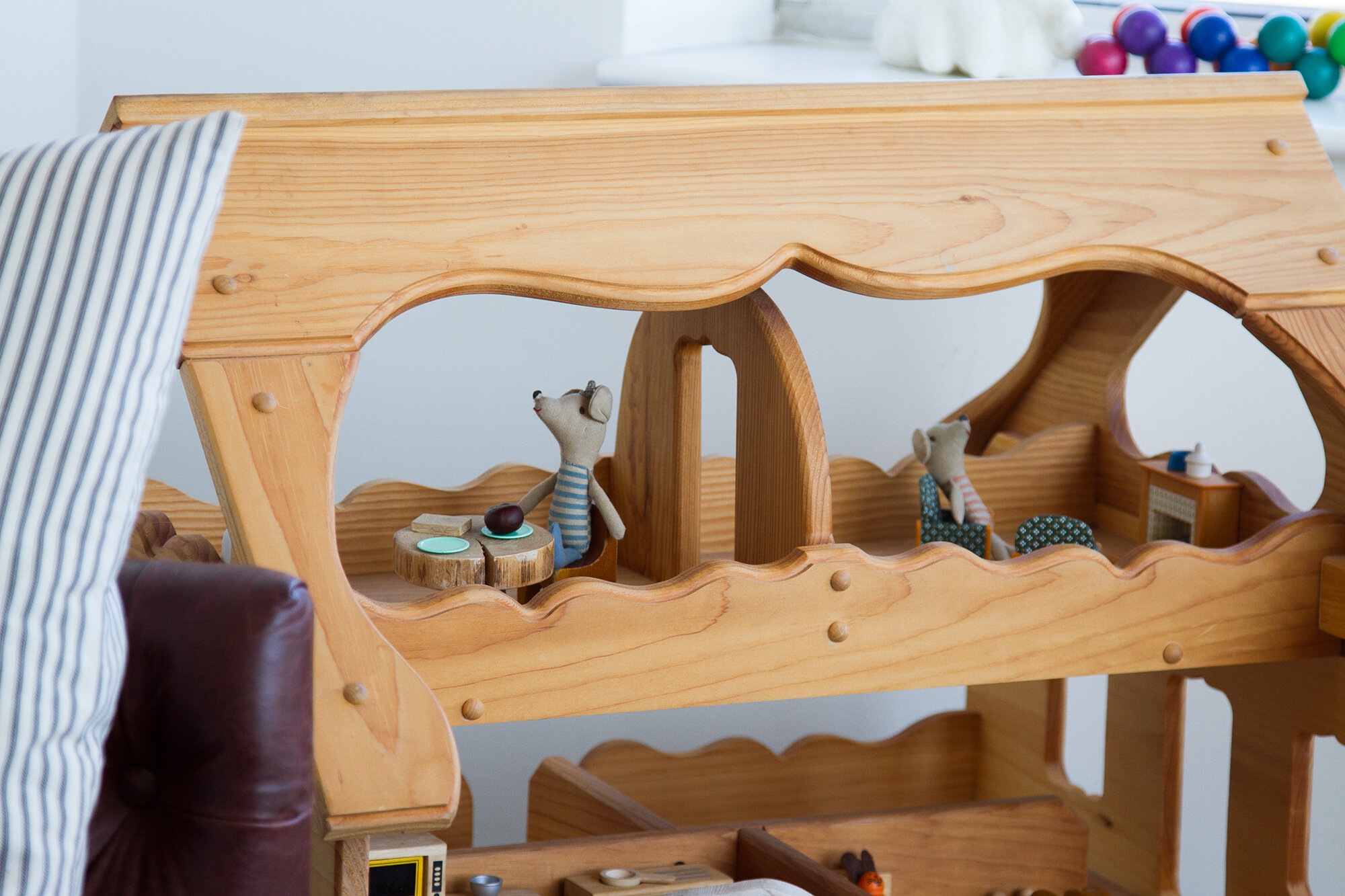 Erin: How do you do gift-giving at your house?
Erin: How do you do gift-giving at your house?
Joylynn: I’ve never been very good about keeping things. When we were in high school, Charlie would save up to buy me a pair of earrings and I would inevitably lose one of them. He still attempts, now and then, to buy things that I will keep and cherish, but to little avail. (He lives in hope.) What I do still have from our high school days are all of the mix tapes Charlie made to share his experience of music with me. I still remember all of those songs. And that’s the vein of gift-giving that we’ve come to enjoy the most: shared experiences. I just had a birthday and we celebrated by going to see two Broadway musicals in one week. It felt like a holiday.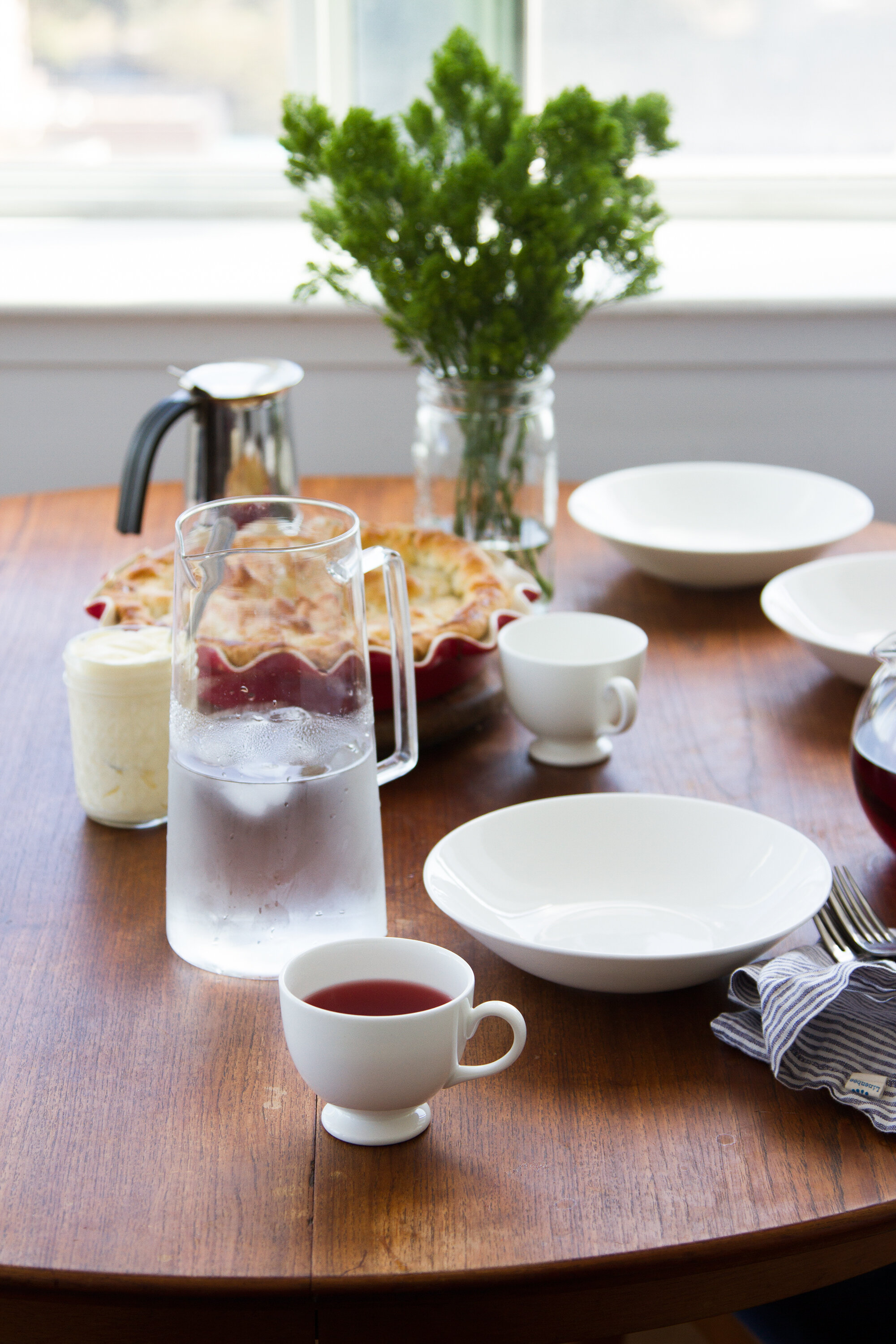
Actually, holidays and festivals are big in our house, especially seasonal ones. Last year we attended three different lantern walks as a family to mark the change of the season from autumn to winter. We also enjoy observing overlooked feast days, like St. Nicholas Day, when we leave empty shoes in front of our apartment door and find cookies in them the next morning. To always look forward to the next festival is a wonderful way for a child to experience the circling of the year. And the small traditions our family creates around them make the consumerist aspect of each holiday so much less important.
Of course we still give each other physical gifts. I grew up receiving one large and one small gift for Christmas from my Waldorf parents. I always felt excited and incredibly grateful for them. I try to remember that feeling now when considering what to give my daughter for an upcoming holiday. I think, how will she experience the gift? Instead of asking myself other questions like, how much will she learn from it? Or have I bought enough presents for her?
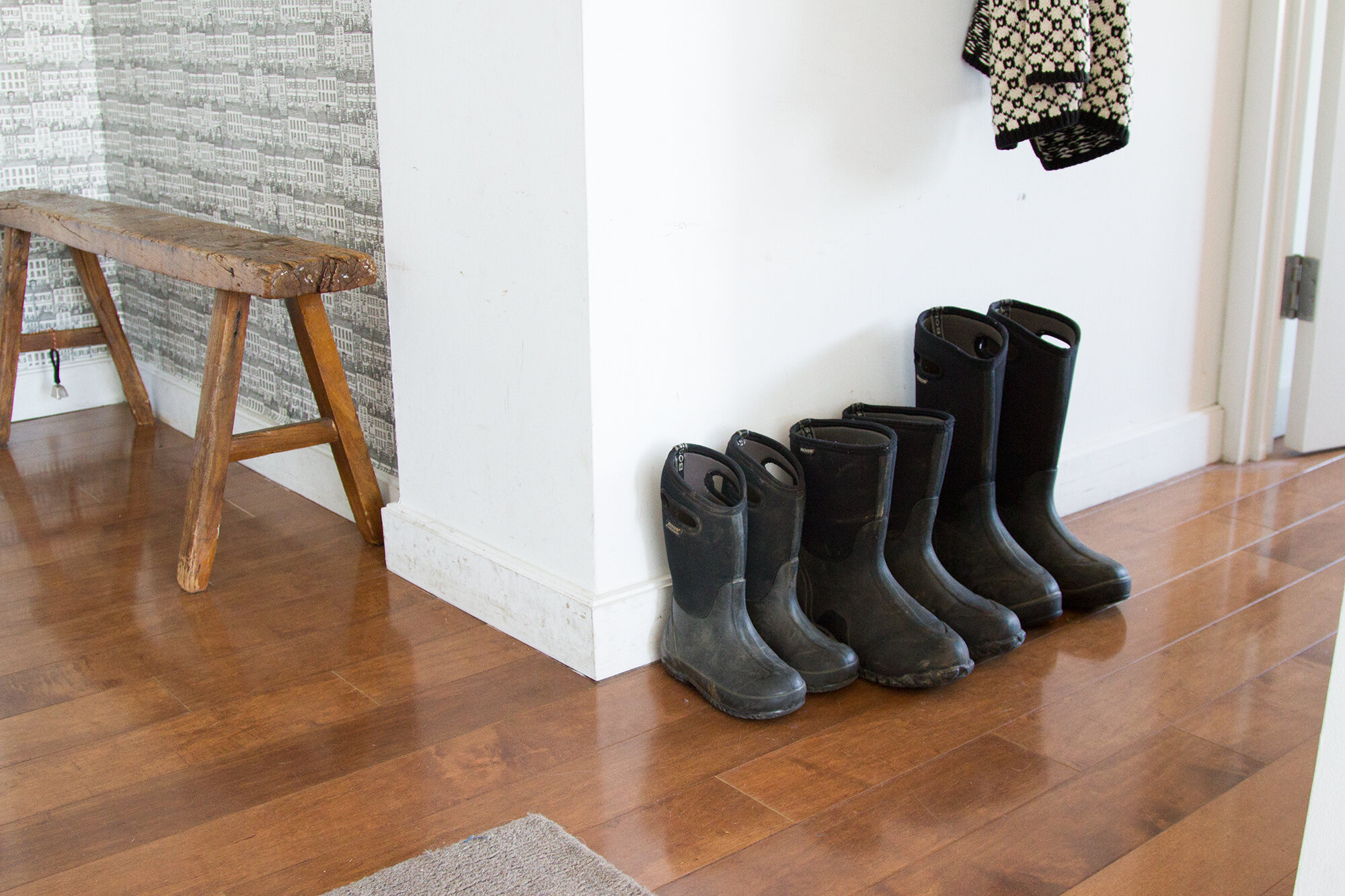 Erin: You live in the middle of a huge city, but you clearly also really value time spent outdoors. Why do you think outdoor time is important and how do you think it might impact your “indoor” time?
Erin: You live in the middle of a huge city, but you clearly also really value time spent outdoors. Why do you think outdoor time is important and how do you think it might impact your “indoor” time?
Joylynn: Spending time in nature enriches my daily life and it deepens my experience of being human. It has taught me to be more observant and to use all of my senses. To watch the sunrise, to feel the change of temperature on my skin, to smell the morning dew as it evaporates, to hear the birds wake up in the trees overhead… It all wakes me up to the thought that we’re all a very small part of an ever-changing, natural world.
Is this thought useful while I’m making dinner or dropping off my daughter at school? I don’t know. But I do know it’s there, and I have found it to be a refuge during times of change and grief and joy.
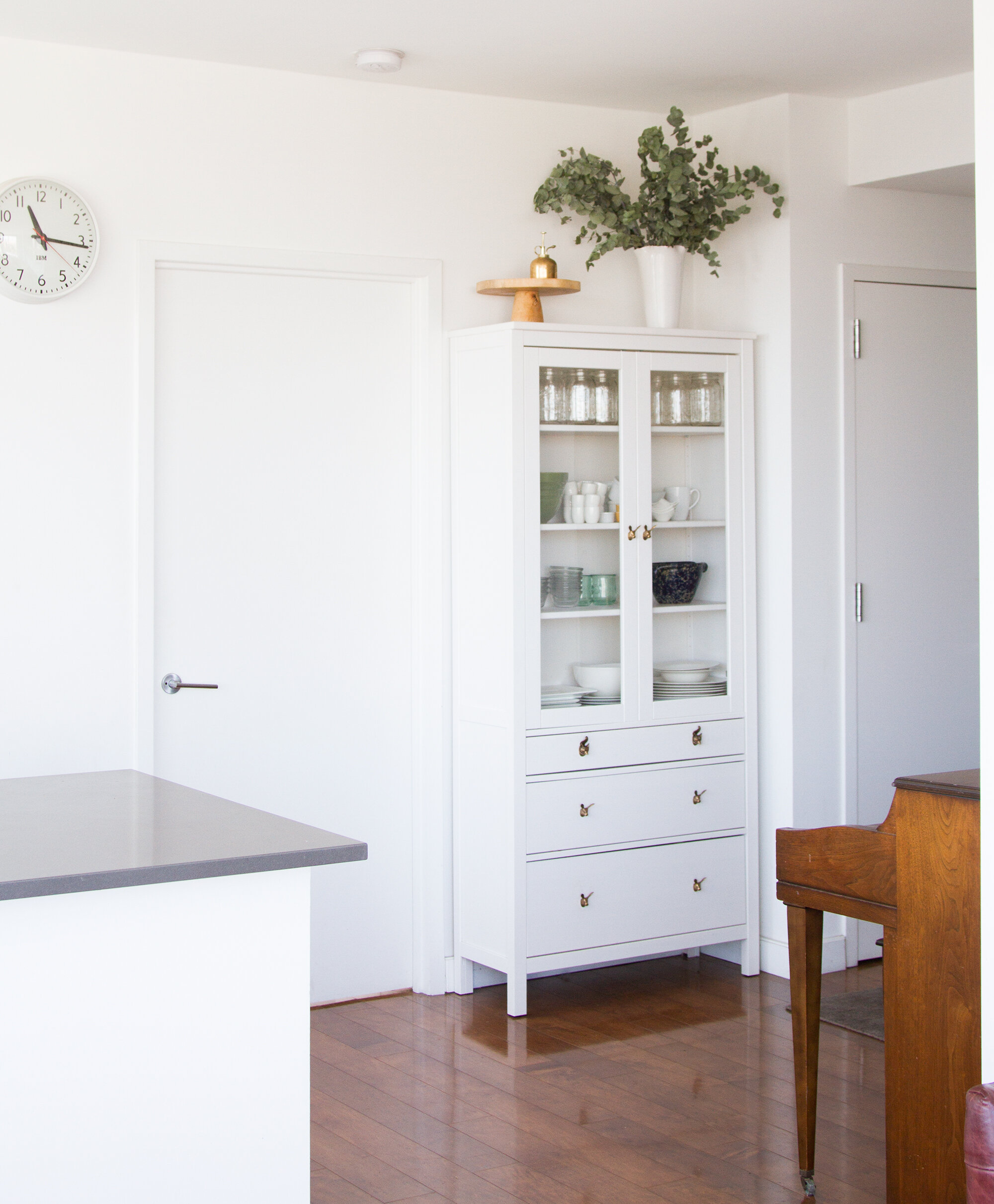 Erin: There’s a school of thought that says a minimalist environment is less emotionally stressful or taxing. What do you think?
Erin: There’s a school of thought that says a minimalist environment is less emotionally stressful or taxing. What do you think?
Joylynn: For me, a huge reason to live with less is to avoid spending lots of time organizing my things. It frees me up for more exciting pastimes. As a city dweller living in a small space, it’s also about striving to be grateful for where I am and what I have and not looking for a larger space just to store all of my stuff. It’s a big, busy and wonderful city we live in and I love living here with my family. But I also love escaping it, whether to my quiet apartment or to one of the beautiful city parks that belong to us all.
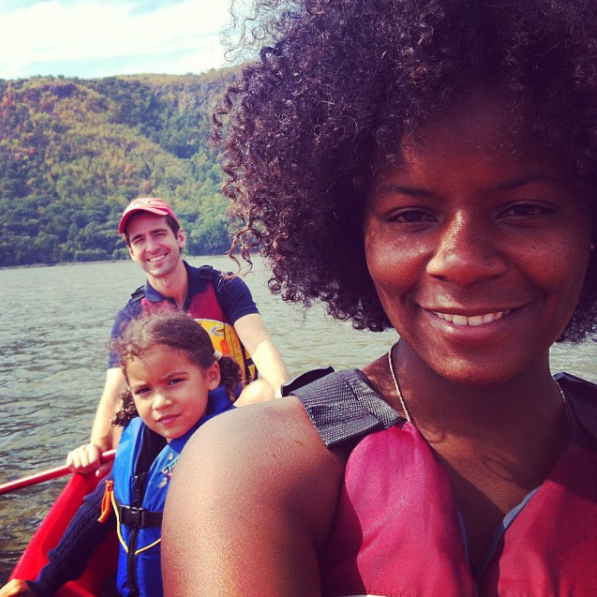
To read more about the Brooklyn Forest School, head to their website.
To follow along with the Brooklyn Forest School on Instagram, head to @brooklynforestschool.
The Simple Matters Series is inspired in part by curiosity piqued while writing my book of the same title. I wanted to know what simple matters were for other folks. And why simplicity mattered to them in the first place. My own story came out in January of 2016. It’s available right this way.

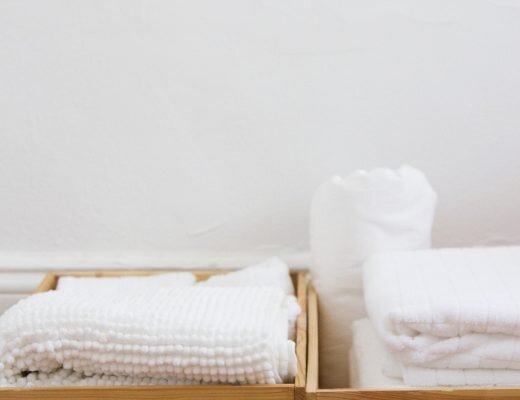
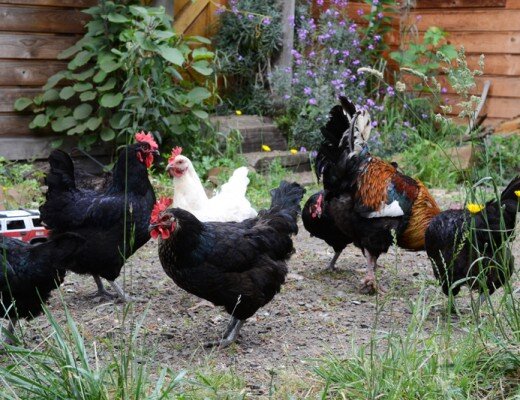
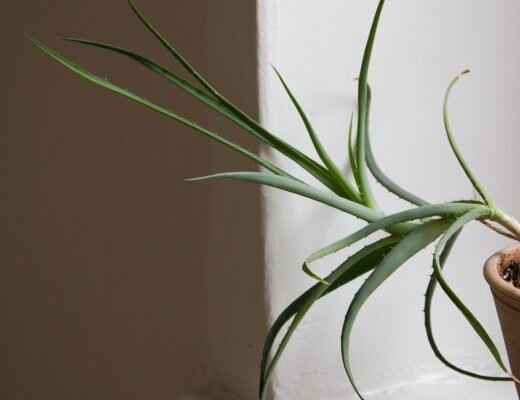
27 Comments
Wow that is a nice way to educated children. These days kids are focused so much in technology that they forget what childhood really means. My bf’s nephew is 10 and he is very spoiled. He gets tons of presents for Christmas and everything he asks for. I wish I could give him a gift that would matter more except for toys, laptop, phone .. something else. Do you have any suggestion for me?
http://mihabalan.com
I literally stumbled upon the Brooklyn Forest School at work & play a couple of summers ago. The guide’s call to the children to come “Wash hands” (sung in a soft, lilting voice) was so lovely. How nice to read that she brings that same presence to bear in her home life as well. So admirable.
She is beautiful, absolutely beautiful. And this post is lovely. I love the thought of a forest school in the midst of a large city. What a wonderful experience for children and adults alike!
I do enjoy reading about you joslyn and your forest school, glad I was there for the one day experience with your mom and the twins. God bless you keep up the good work.
yay! more simple matters. love them.
Going to figure out a way to enroll in their Central Park class, my whole family would love this. We spend as much time as possible outdoors but love the idea of doing it with other families. Great post! Love this series.
I think I would have loved forest school when I was younger (and even now, heh)! I used to believe that chunks of concrete leftover from construction were extraterrestrial souvenirs from the moon.
I wonder if forest schools exist in California. Thank you for this series!
I’m happy to know this kind of experience is available to urban children. I can’t think of a better childhood than one spent outdoors in freedom and with one’s imagination in full bloom. I recently learned that our public parks in Seattle are being used for ten low-cost preschools to serve 150 children here in the city. The children are issued full-body outerwear at the outset and are outside rain or shine for the duration of the class. I have no doubt they are learning as much or more than any child stuck inside a stuffy schoolhouse!
I grew up in the country (for awhile on a farm that my parents were renting, then later in a small neighborhood with large yards – with creeks in both places). We got kicked out of the house and were expected to be back before dark. Of course we were very lucky to have a safe environment that supported this type of childhood. Without this being an option in large, urban areas, I’m intrigued that it has been formalized into a forest school.
One of the best parts of our exploring as kids was not having adults around. If you fell in the creek, you dealt with it until you wanted to go back inside. If you wanted a snack, you figured something out (or in our case, stopped at Grandma’s house…). In forest school, how independent are the children during the activities? Do they have free time or is it all within the structure that Joylynn describes?
Agreed: as kids get older it’s so great for them to have freedom to explore on their own! Although there’s a basic structure and rhythm to Forest School, one of the best parts is that kids are also really encouraged to follow their own route within that structure. These guys are super little—most of the kids in Faye’s class are between 18 months and 2.5 years, so they’re not left *entirely* to their own devices but there’s still a great deal of independent exploration.
Our daughter has attended Brooklyn Forest School since last spring, and I met you once when I once brought her to a makeup class instead of the one she regularly attends. Forest School is without a doubt the highlight of D’s week and I’ve been so happy to find a place where she can, with a little bit of guidance and structure, explore nature and use her imagination. She very quickly latched on to the rhythms and the rituals of the class, and I love when I hear her singing bits and pieces of the songs at home while she goes about her day. Thanks to you and to Joylynn for sharing this addition insight into her home life.
Hi Shannon! So glad to see this note! Agreed entirely about the class. So grateful to Joylynn for taking the time to share more of her story!
The concept for forest school is just so GENIUS!!! I love how Joylynn makes the rhythms of nature part of her family’s everyday life — in the city, no less! Absolutely inspiring.
Such a wonderful post! Although I don’t have children yet I hope to share these philosophies, environments, and activities with them! I absolutely love Joylynn’s outlook on holidays and festivals and how they flow with the changing of seasons. My husband and I were literally talking about that topic last night; how we’d like to focus more on the seasonal aspects of holidays rather than the commercial ones. Such great timing! Thank you for this post!
I love this idea. I spent my childhood in suburbia outside from sunup to sundown (and sometimes later) exploring our backyards with my neighbors. I don’t have kids yet but always believed I could never do it in the city, because I want my kid to have that outdoor childhood. This seems like a great way to bring some of that into the city.
It really is! There are definite differences between city childhoods and suburban ones, but I think one of the biggest misconceptions is that city kids spend a lot of time inside. In my experience it’s just the opposite. Apartments are too small to hang out in all day, so kids spend hours upon hours out and about!
Beautiful! I love this so, so much.
I have written a couple of entries on my blog about outdoor space and play. It is so important to a child’s development! I love the idea of forest schools and outdoor classrooms at “regular” schools as well.
I was so happy to read this post. We currently reside in Switzerland and a huge part of our children’s lives are spent outdoors. Both of our children attended forest school when they were smaller and I truly believe it has made a great impact on their emotional, physical, spiritual well – being. I was happy to see that Brooklyn is teaching Forest School and know the families and children involved will benefit greatly from such a fabulous program. All the best to Joy and Charlie on their amazing school!
I really enjoyed this article and found it inspiring. Thanks for sharing!
What a lovely post and school, thank you for the interview! I just heard about something similar (though I think it’s more of a playgroup) that happens each week in Portland Maine, and this is a good push towards trying that out with my two kids! We live in the city, but near enough to trails and parks to get out and enjoy them, but I have to admit I often wind up just taking them to the playground. I’ll make an effort to go a little further and find the woods next time!
I love forest schools and can’t wait to enroll our daughter next year. We are in SF and there are two schools: Wise Forest or Parks Plus.
What a beautiful home.
Wow. This is such a beautiful way to help children develop and play especially in this city! I don’t have children (yet!) but, I always think about if I could raise kids in the city with them being so disconnected from nature. This post makes me realize it doesn’t have to be that way. Such a beautiful post and school. Thank you for sharing.
But but… however do they make their bread??
Hi Erin, where did you get the overalls for Faye in this picture?
They’re hand-me-down Carhartt’s! They’re the best. So affordable and so durable!
Comments are moderated.